|
|
AURORA PROJECT
Buildings: History & Future
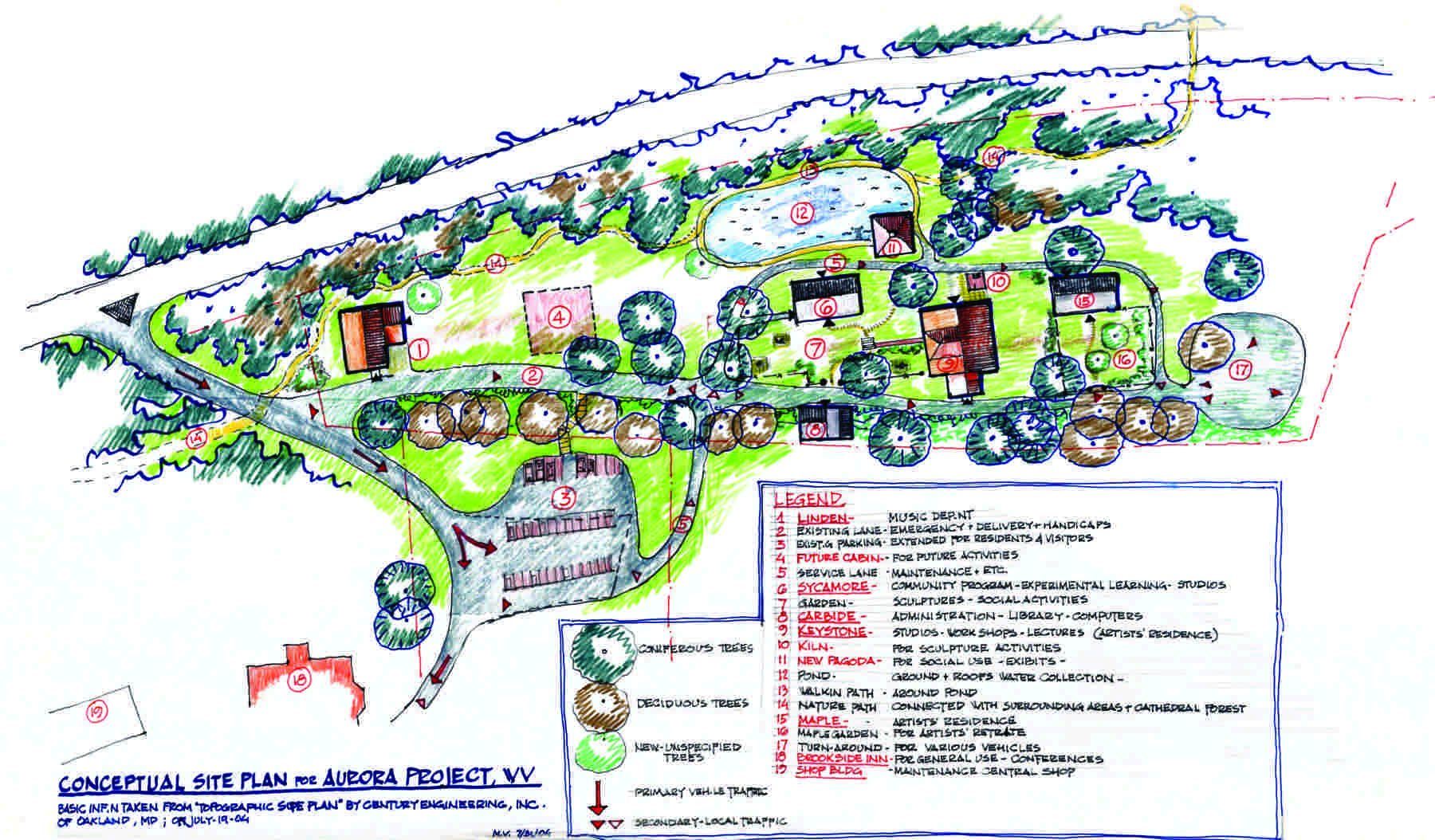
Conceptual Site Plan
click here to see larger image
Housed in a former 19th century resort complex directly across from Cathedral State Park, these five historic cottages are the primaryoperating base of The Aurora Project. Since 2001 four of the five buildings have undergone major renovations in preparation for future artists residency programs.
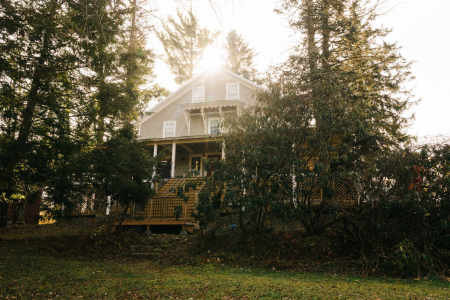 |
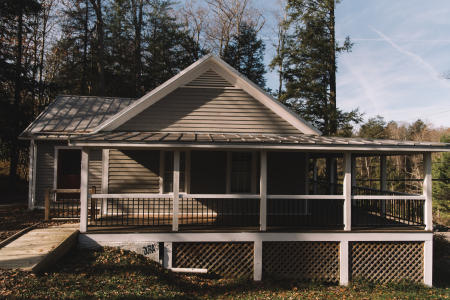 |
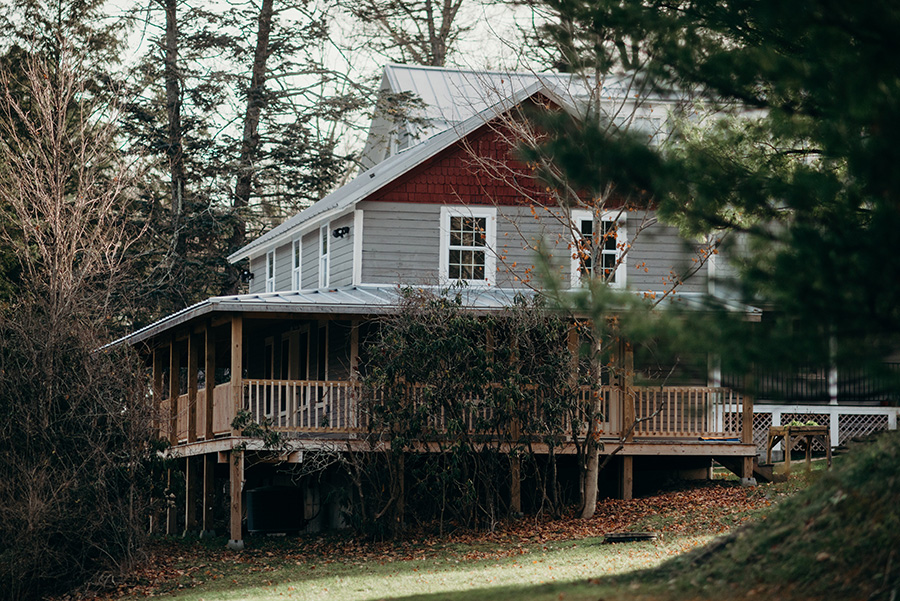 |
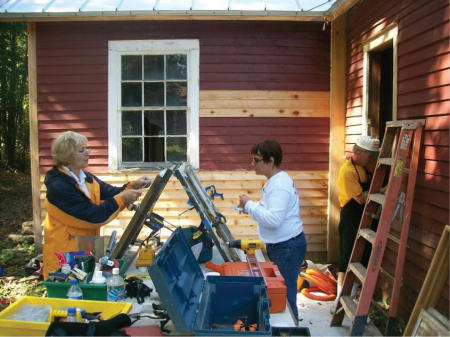 |
An artist colony, Aurora Project provides artists a peaceful place to practice.
by Scott Gillespie, Correspondent, May 27, 2015, Preston County News Journal
Located off WV Rt. 50 directly across from the entrance to Cathedral State Park and near the West Virginia-Maryland border, the Aurora Project’s five buildings, in varying states of restoration.
“I was totally in love with Aurora from day one,” Viola Wentzel began.
Ms. Wentzel’s longstanding affair with rural Preston County has contributed to her life’s fascinating arc from a member of Germany’s First Family, where her father served as Chancellor from 1966-69, through years in Washington, D.C. married to a world renowned National Geographic photographer, until today, where she resides in the family cabin and heads the Aurora Project, Inc., an artists’ colony.
“Part of my attraction to Aurora is it looks very much like Germany – but without people,” she said, laughing. “There are woods and mountain ranges. It’s still a little bit of the frontier.“
“One of the things that comes with so much unpopulated area is the people are very nice to each other. It’s very neighborly and we help each other. I just love it here,” she said.
Wentzel’s father, Chancellor Kurt Georg Kiesinger, who headed Germany only 21 years after the reign of Adolf Hitler and tragedy of World War II, also loved Aurora and Preston County.
“My father came here every summer for 16 years and he always said, ‘West Virginia is the same size as my state, but it has 1/10th the population.’ To have so much land is unheard of in Europe and Germany,” Wentzel said one recent afternoon.
But it was Wentzel’s husband, the highly acclaimed photographer Volkmar Wentzel, whose work graced National Geographic magazine for nearly 50 years, who first moved to Aurora and introduced Viola and their children to life in Preston County.
 In 1937, Volkmar purchased 13.5 acres of wooded land in Aurora for $135, the money a high school graduation gift from his father. He introduced Viola to rustic West Virginia shortly into their marriage, and it was she who decided to build what became a retreat where the family spent weekends and holidays.
In 1937, Volkmar purchased 13.5 acres of wooded land in Aurora for $135, the money a high school graduation gift from his father. He introduced Viola to rustic West Virginia shortly into their marriage, and it was she who decided to build what became a retreat where the family spent weekends and holidays.
During weekdays, the Wentzels resided in a handsome home on Colorado Avenue in Northwest Washington, D.C., opposite the French embassy. But each weekend, the family made the 170-mile, 3.5-hour trek to Aurora.
The couple’s three children — Cecelia, Christina, and Peter — immediately took to life in the mountains.
“From the day Peter could speak, he always said, ‘I’m going to live in West Virginia,’'"Viola recalled.
Today, Dr. Peter Wentzel, a family physician, practices in Taylor County and resides in Morgantown.
Viola Wentzel’s love of Aurora, her lifelong appreciation of the arts, and a friendship with several local residents with similar passions ultimately led to her current position as president of the Aurora Project, which bills itself as “Keeping the Arts Alive in Appalachia.”
Offering three-to-six-week residencies for as many as nine working artists and scholars, the Aurora Project’s private studios provide simple yet comfortable accommodations, three meals a day, and a chance to create in the company of like-minded others.
Now in its 10th year of hosting artists, Aurora Project residencies are open to professional artists at any career stage.
It’s the only program of its kind in West Virginia.
“Our goal is to give artists time and space away from the daily nitty-gritty, to provide a place for them to work and to create,” said Wentzel. “The people who come here are not would-be artists, but they are working artists who have a resume to show.”
The cost to artists is minimal. For artists with the ability to pay, the daily rate is $35. For struggling artists, that fee is often waived entirely.
“Once they are here in Aurora, they don’t have to worry about their food or housing. They are confronted only with their own creativity,” said Wentzel.
“The artists are fed and housed, and in the evening the different fields, such as literature, painting, and music, often come together and talk to each other, exchanging creative ideas. We feed them well – and we water them well, too,” she added.
Located off WV Rt. 50 directly across from the entrance to Cathedral State Park and near the West Virginia-Maryland border, the Aurora Project’s five buildings, in varying states of restoration, sit on the site of a popular 19th century summer resort, Brookside Hotel and Cottages, which operated until the Great Depression.
The buildings were idle for decades until 2001 when three members of the Aurora Area Historical Society – Michele Moure-Reeves, Alice Penzo, and Walt Ranalli – formed a non-profit organization with the expressed intent to build an artists’ residency, one that would serve the community.
The Aurora Project was born.
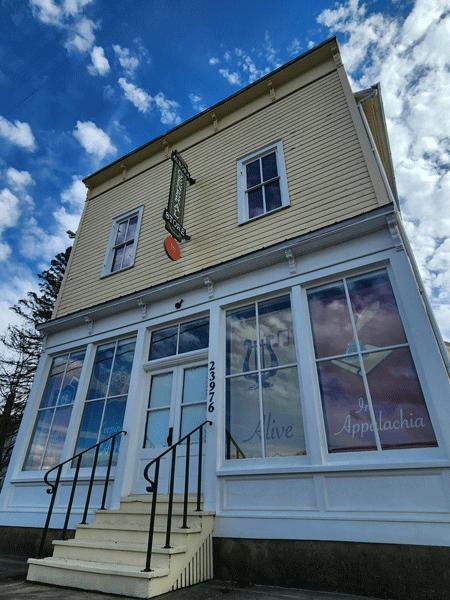
Penzo donated a former general store, which now features a photography studio and painting space. Worked then turned to the cottages, replacing foundations and modernizing wiring and plumbing.
The Aurora Project’s administration building, Linden Cottage, is mostly complete today and features a library and conference room. Restoration of Keystone Cottage, which will house nine guest rooms, a commercial kitchen, and a large gathering space, is underway. Three other cottages, when complete, will serve as music, writing, and painting studios.
The restoration of the Aurora Project’s buildings has been a tedious process, but $1.6 million in purchases and improvements have been completed to date.
Funding has been provided by grants from such entities as the West Virginia Commission on the Arts, the now-defunct Vandalia Heritage Foundation, private donations, and public fundraisers.
“It’s hard to get money for bricks and mortar,” said Wentzel. “It’s not particularly sexy.”
Since 2005, artists have resided in nearby cottages donated by board members. The Aurora community center is used for large gatherings.
Kellyn Biela is an AmericCorps volunteer and Orlando, Florida, native who now resides in an Aurora cottage as she works with the artist colony and at the K-8 Aurora School.
A graduate of Rollins College who studied art history, Biela has been part of the Aurora Project since September 2014 and recently requested an extension to her stay here.
“The Aurora Project is an opportunity to preserve the heritage and culture of Aurora, and that’s one of my passions. Right now, I’m helping plan the events series, working on an arts enrichment program for students at the school, and an arts integration project with local English and art teachers,” Biela added.